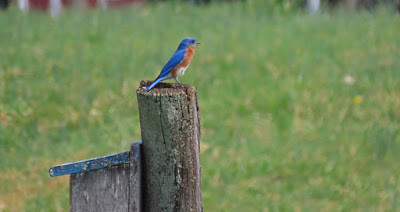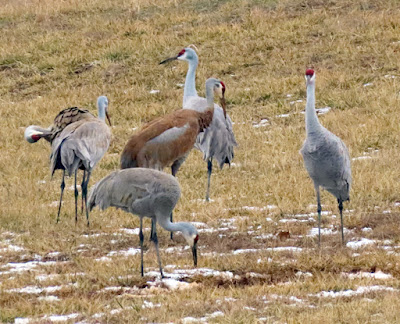How often do you get to use the word "miscellany" in a birding blog? This is just to bring things up to date before the migration season shifts into high gear. The owlets at Cave Hill are growing fast. They are eating whole mice now from their parents, and should start climbing around on the branches soon. I plan to return to Cave Hill frequently to keep up with their progress. Assuming, of course, they are active during the daytime.
When they started building the East End Bridge several years ago, they found an active eagle nest in the construction area. Debate went back and forth for a while - should they change the plans for the bridge? It was finally decided to proceed, and the eagles didn't seem to mind. A few years later, however, they lost a chick, then the nest tree came down altogether in a storm, and they decided to move. The new nest was built nearby, so I decided to look for it. Found mom on the nest and dad keeping a watch nearby. Good news!
Arctic weather made Creasey Mahan and the Louisville Audubon Society cancel the event for Great Backyard Bird Count. This Saturday started cloudy and windy but improved as the day moved on. Tavia limited the number of attendees, because of the COVID, but everything worked out well. Tavia took people into the Woodland gardens to look at the wildflowers. I hope folks will come back to see how the blossoms change during the rest of the season. Lee Payne and I, as LAS Board members, led two groups around the Nature Preserve looking for birds. Our visitors were mostly inexperienced birders, so we talked about how to get started birding and how to use binoculars initially.
 |
| Pine Warbler by Lee Payne |
Lee is the "Owl Whisperer" who knows where all the owl nests are, so after the official walks, we headed into the woods looking for owls. I started losing my balance, so we didn't stay long enough to find an owl, but we did track down a FOS Pine Warbler. It's yellow, it's trilling and it's in a pine tree -- got to be a Pine Warbler! April is coming soon - what wonders wait to be found!



























